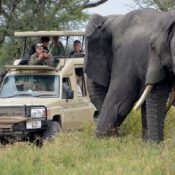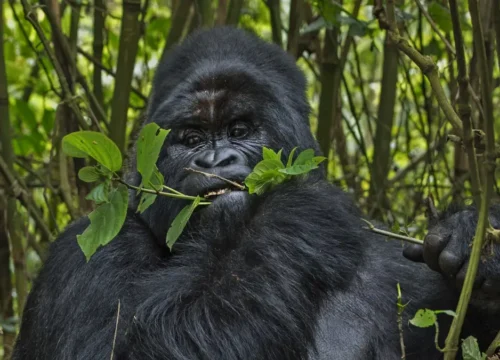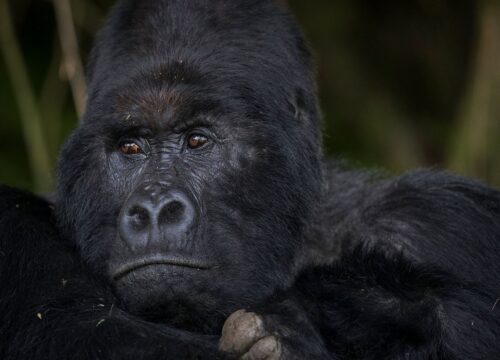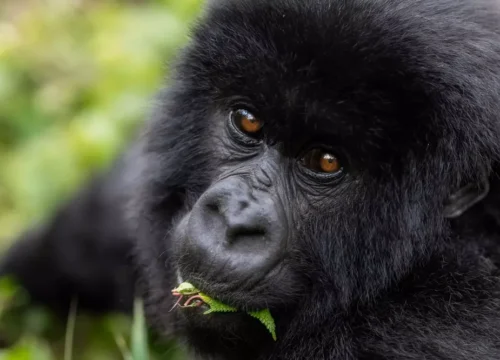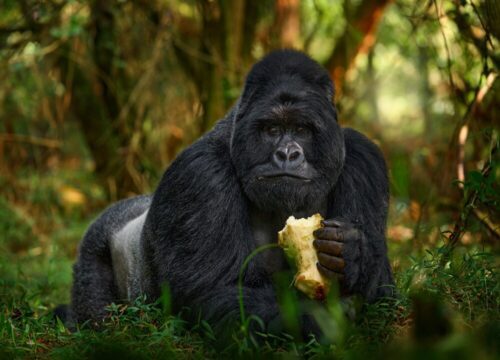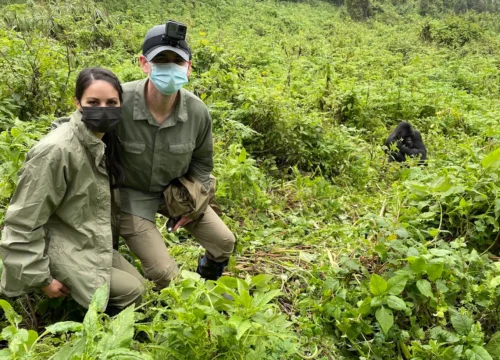Kapama Game Reserve
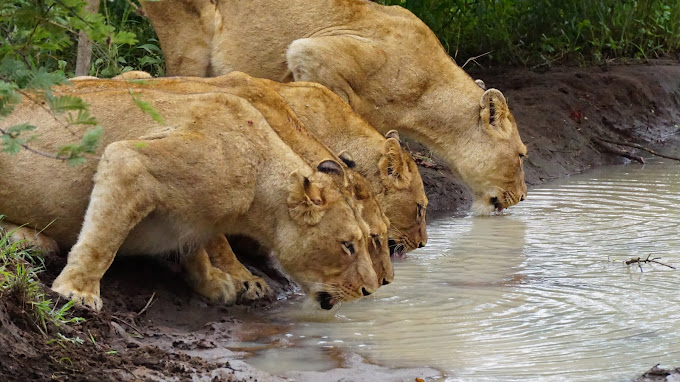
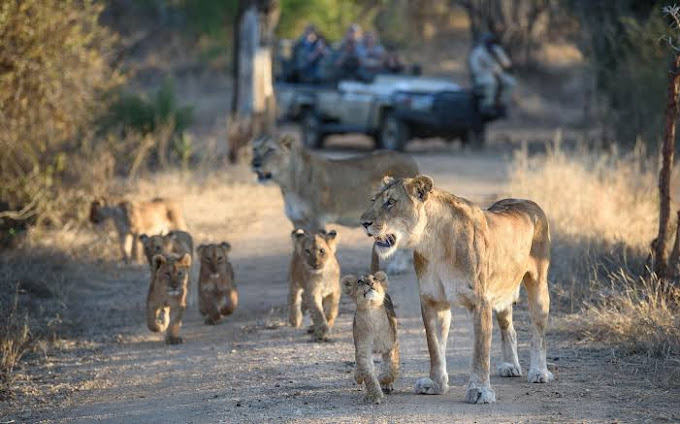
Kapama Game Reserve Overview
Kapama Game Reserve is a private Big Five reserve with several high-end safari lodges offering a range of activities, including day and night drives, bush walks and romantic sleep-outs below the stars. If you’re a keen photographer, you might like to fine-tune your skills in a field photography workshop. Although this large reserve lies very close to Greater Kruger, it is fully fenced and not part of a larger ecosystem.
Kapama Game Reserve Pros & Cons
- Plentiful wildlife includes all the Big Five, cheetah and African wild dog
- Game drives, bush walks, night drives and romantic sleep-outs offered
- Several luxury lodges with different styles and atmosphere
- Excellent spas, fitness and wellness centers
- Expensive packages and no self-drive option
- Less authentic experience than in larger eco-systems
Kapama Game Reserve Wildlife
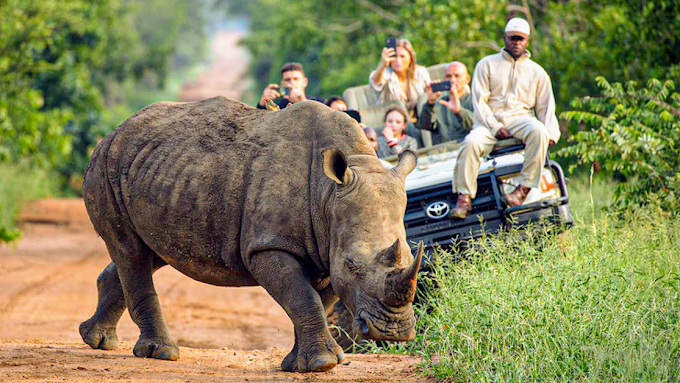
The Kapama Game Reserve is a former cattle ranch and has been re-stocked with animals that would have previously occurred here naturally. All major safari animals are present, including the Big Five. Lion and cheetah are easily seen and even the shy leopard is quite habituated. Giraffe, wildebeest, greater kudu and impala are all numerous.
Kapama Game Reserve Scenery
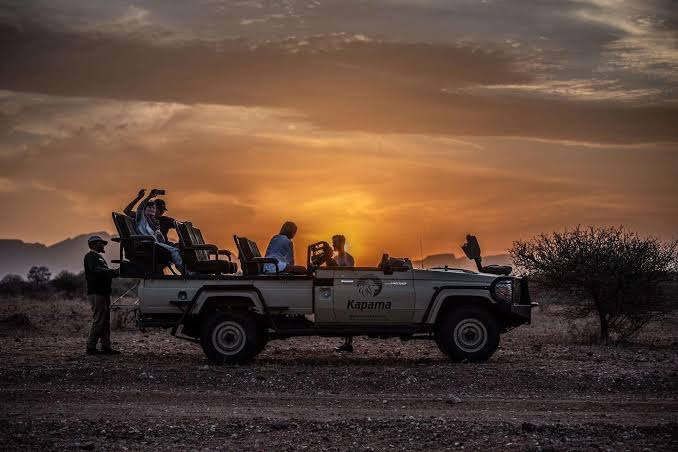
Kapama’s habitat consists of savannah woodland, grassland and riverine bush. Several waterholes and dams provide water throughout the year. Distant peaks of northern Drakensberg mountains form a beautiful backdrop to the reserve.
Kapama Game Reserve Weather & Climate
The hot and humid summer, from October through April, is known as the Wet season in Kapama Game Reserve. The mild winter months, from May to September, are the Dry season. It is necessary to pack warm clothing if visiting in winter as early morning game drives tend to be chilly. During the wet summertime, thunderstorms are common in the afternoons.
Kapama Game Reserve can get uncomfortably hot in summer, between October and April. These months tend to see the most rain, and the combination of heat and moisture make for sticky conditions. In contrast, little rain falls during winter, from May to September, and the temperature hovers around an agreeable 26°C/79°F.
Dry Season–May to September – Winter
There is virtually no rainfall in the winter season, so animals come out of the dry bush in search of water. They tend to gather around permanent sources, such as waterholes and rivers, making them easier to spot.
- May – Temperatures drop to an average range of 12°C/54°F at night to 28°C/82°F in the afternoon, as summer transitions into winter.
- June, July & August – Average temperatures range from 11°C/52°F in the morning to 25°C/77°F in the afternoon. The skies are mostly clear and sunny. Bring warm clothing for early morning game drives.
- September – Average temperatures range from 15°C/59°F in the morning to 27°C/81°F in the afternoon. The year’s first rains start, bringing the Dry season to its end.
Wet Season–October to April – Summer
The heat and humidity of the summer can be relentless. Temperatures can regularly climb to well over 40°C/104°F. Average daytime temperatures are about 31°C/88°F with damp, steamy conditions. Afternoon storms are normal, although day-long rains would be unusual.
- October & November – Average temperatures range from between 18°C/64°F in the morning to 29°C/84°F in the afternoon. The heat gradually builds as afternoon rains become more frequent.
- December, January & February – The highest temperatures and the most rain (creating high humidity) occurs during this time. Downpours in the afternoon are common. The extreme heat at 40°C/104°F or higher can make conditions almost unbearable. Afternoon temperatures average 32°C/90°F.
- March & April – There is a decrease in rainfall, and the weather cools. This trend continues throughout April, which is a lovely, temperate month. Nights remain cooler, yet fine, averaging 15°C/59°F. Daytime temperatures are around 31°C/88°F.
Best Time To Visit Kapama Game Reserve
As the vegetation shrinks back in the Dry season (May to September), and wildlife hangs around the few remaining water sources, this is the best time for viewing animals. Activities may be interrupted during the stormy, rainy season (October to April), although birders will appreciate the chance to see migratory species.
Wildlife & Animals Kapama Game Reserve
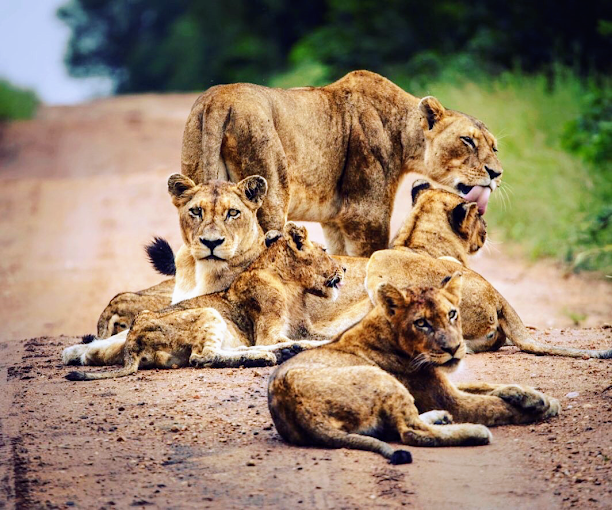
Kapama Game Reserve is a fully enclosed, private reserve that is well stocked with large safari animals, including all of the Big Five. Lion and elephant are especially easy to see. Other large carnivores include cheetah and the endangered African wild dog. Kudu, zebra and giraffe are some of the other animals you are likely to encounter.
Wildlife Highlights in Kapama Game Reserve

Game drives and bush walks in Kapama offer good general wildlife viewing. If ticking the Big Five is a priority, you are almost certain to see lion, elephant, buffalo and white rhino over the course of a few game drives. Leopards are more elusive and most likely to be seen on night drives. A small pack of African wild dogs was recently introduced to Kapama and is quite often seen trotting through the bush or in the hunt. Other safari favorites include cheetah, giraffe, zebra, warthog and a variety of antelope.
Best Time for Wildlife Viewing
The Dry season (May to September) is the best time for wildlife viewing in Kapama. Highly recommended are the months of August and September as temperatures are warmer than in midwinter. It is also the end of a long, dry period and this causes the animals to gather around known water sources, making sightings even easier.
Birds – Kapama Game Reserve
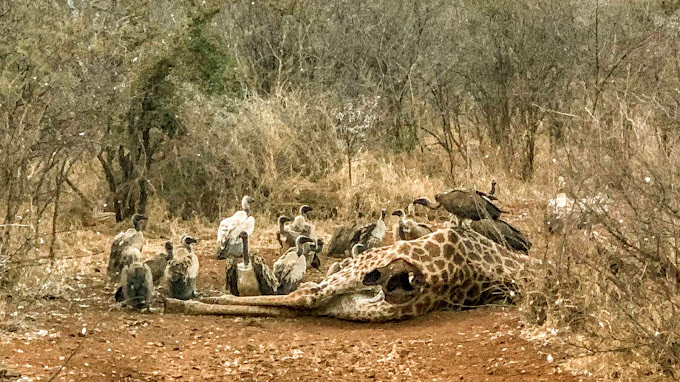
Around 350 bird species have been recorded at Kapama Game Reserve. Migratory birds are present from November to April. The main focus in Kapama is on wildlife viewing, so if bird watching is important to you, it would make sense to make prior arrangements for private game drives and bush walks. Night drives are great for seeing some nocturnal species not easily encountered in the national parks.
Kapama Game Reserve Birding Specials–Treats for Avid Birders
- African green pigeon
- African hawk-eagle
- Arrow-marked babbler
- Black-crowned night heron
- Chinspot batis
- Common greenshank
- Greater painted-snipe
- Jameson’s firefinch
- Lesser spotted eagle
- Little grebe
- Pennant-winged nightjar
- Senegal lapwing
- Shaft-tailed whydah
- Southern ground hornbill
- Southern pochard
- Stierling’s wren-warbler
- Temminck’s courser
- White-winged widowbird
- Yellow-breasted apalis
Best Time for Bird Watching in Kapama Game Reserve
November to April (when migrants from the northern hemisphere are present) is the prime time for bird watching in Kapama, although it is generally good year-round. The dry months, from May to September, are best for general wildlife viewing.
Best Time To Visit – Kapama Game Reserve
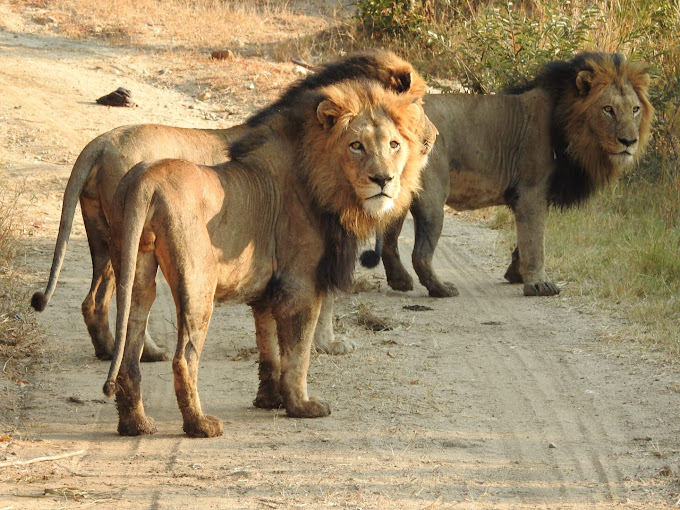
Winter (May to September, also known as the Dry season) is the best time for wildlife viewing throughout the region. Vegetation thins during this time, while animals seeking water gather at rivers and waterholes, and this only gets better for wildlife watching as the winter goes on. However, because Kapama Game Reserve is a fenced ecosystem, wildlife viewing is less affected by season than would be the case if it formed part of a migratory ecosystem.
May to September –Dry Season – Winter
- It’s easier to spot animals as they stay near water and the vegetation is thinner
- Off-season for tourists
- Clear, sunny skies
- Temperate weather with very little humidity
- Risk of malaria is low
- Very dry and dusty
- Warm clothing needed for chilly morning game drives
October to April –Wet Season – Summer
- Fresh, lush green scenery
- Animals are in good physical shape and there are many newborns
- Birding is excellent due to the arrival of migratory birds
- The Dry season has better wildlife viewing
- Daytime is hot and humid
- Antimalarials medication is needed
Getting There – Kapama Game Reserve
Most people visiting Kapama Game Reserve fly into Johannesburg’s O.R. Tambo International Airport (JNB) and continue with a connecting flight to Hoedspruit’s Eastgate Airport (HDS). The short airport transfer to the reserve is included in your stay.
Driving to the park from Johannesburg is also possible. Kapama is on the R40 near Hoedspruit west of Kruger National Park. The 450km/280mi drive takes around 4½ hours
Airlines & Ticket Prices
Please check Skyscanner to see which airlines can take you to O.R. Tambo International Airport (JNB), and what tickets would cost.
Domestic Flights
Kapama offers packages including flights, using its own small aircraft, from O.R. Tambo International Airport (JNB) in Johannesburg or Cape Town International Airport (CPT) to its private airstrip.
There are several domestic carriers offering scheduled flights to Hoedspruit’s Eastgate Airport (HDS):
Malaria & Safety – Kapama Private Game Reserve
Safety
Kapama Game Reserve can be safely visited. All parks and reserves in South Africa are virtually free of crime. However, when visiting cities in South Africa, normal urban safety precautions should be taken. Read ‘Cities & Other Urban Areas: Safety Precautions’ below for more information. When following these precautions, you shouldn’t have any crime issues during your visit.
For current information about safety in South Africa in general, please check the government travel advisories (see the ‘Safety & Security – South Africa’ link below).
Malaria & Vaccinations
During the wet months of October through April (summertime) there is a small risk of contracting malaria in Kapama and the Greater Kruger area in general. Precautions against malaria include taking antimalarials and using mosquito repellent (those containing DEET are most effective). Several vaccinations are also advisable when traveling to South Africa. Consult with your nearest travel clinic.
Wildlife Viewing
Wildlife viewing is very safe as long as you listen to the advice given by your guide. Incidents with wild animals are extremely rare. For more information, please read the ‘Wildlife Viewing Safety Precautions’ below.
INQUIRE NOW
GENERAL INFORMATION ON A SOUTH AFRICA SAFARI
ENTRY REQUIREMENTS:
All visitors to South Africa must have a valid passport with at least 4 consecutive blanks pages. Any applicable visa and/or relevant documentation are the responsibility of the traveller. For further information on Visa requirements visitors are advised to contact their nearest South African Embassy or Consulate.
LANGUAGE:English
TIME: GMT +3
VOLTAGE: 220 Volts/AC50Hz. Sockets are UK style, 3 pin square plugs. Power is from the government in the city/major towns and generator with inverter back up in the Safari Lodges and Camps.
CURRENCY: Foreign currency must be changed at the Bank, Bureau de Change, and Hotel/Safari lodge/Camp/Resort. Major Credit Cards, Master card, Visa, American Express, are usually accepted throughout the country. Where credit cards are accepted, the payment will normally be recorded in US$ regardless of the card’s default currency.
CLOTHING: Dress is mainly informal and should be comfortable as well as practical. Something warm should be brought along for early morning and evenings. Safari clothes are available from hotels/lodges/camps.
BAGGAGE: Where possible, travel light. Baggage space on safari is limited to medium suitcase or soft bag per person plus reasonable amount of hand luggage. There is 15 Kilogram per person limit on all flights to the wildlife sanctuaries. Excess luggage must be stored in your arrival hotel.
WATER: You will find many different of opinion of what is safe and what is not. We recommend for peace of mind, to drink local Bottled Mineral water. It is important to drink plenty of water especially during the hotter months. We would recommend that guests drink at least 2 to 3 liters of water per day to limit the effects of dehydration.
HEALTH; East Africa is a safe and secure destination; however, it is a good idea to take a few precautions. Kindly consult your GP or local doctor at least 6 weeks before you travel, with regards: Malaria prophylactics. East Africa is a known malaria area and preventive measures are essential. You are advised to take one of the recommended anti-malarial drugs. Be sure to wear long sleeved shorts and trousers after sunset and spray the exposed parts of your body with a mosquito repellent spray Remember to protect yourself from direct sun rays with sunscreen cream or safari hat.
DIETARY REQUIREMENTS: For those guests with specific dietary requirement, please ensure we are notified prior to travel
GRATUITIES: As a guideline and dependent on how happy you are, we would suggest the following: The General Hotel/Lodge/Camp Staff – Approximately U$ 10.00 per person per day Driver Guides – Approximately US$ 15.00 to US$ 20.00 per person per day.
PHOTOGRAPHY: Please be careful when photographing public buildings, airports, bridges, the national flag and people in uniform. Ensure that you have sought permission before photographing local people and their villages. If in doubt, please check with your guide.
Book a Customized Safari
Read about
10 Things you Should NOT DO on an African Safari.
What to expect on a safari in Uganda.
Bwindi Impenetrable National Park
How to Choose the Best Tour Operate for Your Safari in Africa
12-Day Gorilla Tracking in Bwindi
Some of our Gorilla and wildlife Safaris
1 Day Jinja Ultimate tour Experience
1 Day White Water Rafting in Jinja
3 Days Bwindi Gorilla Habituation via Rwanda
3 Day Birding Safaris and Photography in Uganda
3 Day Safari to Queen Elizabeth National Park
3 Day fly in Gorilla Trekking Safari from Masai Mara
3 Day Grand Gorilla Trekking Safari
4 Day Chimpanzee and Gorilla Trekking Safari
Recent Posts
Last Minute Deals
Quick booking process
+49 1575 4711313



